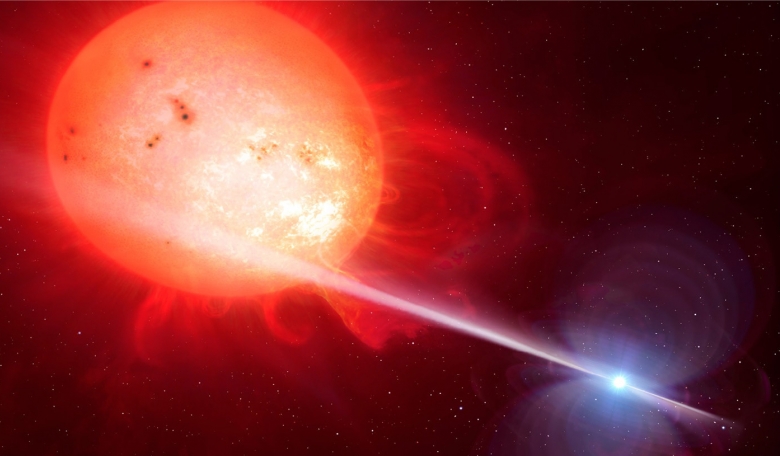There is a population of stars that, despite their impact in the field, have remained under the radar for too long: binary stars. Perhaps not favoured as much as other astronomical head-line grabbing phenomenon, these doublestar systems have a lot to offer. Whatever their size, binary stars of all kinds play an important role in the circle of galactic life, proving that without their existence, stellar life could otherwise be a bit dull in the Universe.
Stars light the Universe and provide the chemical elements which are the keys to all life as we know it. Stars also link apparently disparate branches of physics, from the microscopic quantum world to cosmological general relativity. Binary stars are particularly crucial to our understanding of the Universe on all these scales. They are an indispensable tool for measuring the masses of stars, as discovered by Kepler and Newton in the 17th century. Their orbital properties, such as period and eccentricity (the shape of its orbit), derive directly from fundamental physical properties of matter, i.e. its mass and angular momentum - which is a measure of spin.
Eclipsing binaries tell us stellar masses and radii to an accuracy of a few percent, thus they are vital to understanding the inner workings and evolution of all stars. In the 21st century, binary stars continue to drive the cutting edge of astrophysical discovery, for example white dwarfs in binary stars explode as type Ia supernovae and confirm that the Universe is accelerating its expansion.
Not only that, but the latest surveys of very massive stars tell us that most of them are binaries and half of them interact severely during their lifetimes. We have seen binary stars and binary black holes merge in real time. With upcoming bigger and better surveys of the sky, binary stars remain a vital pillar of modern astrophysics and a laboratory for testing extreme physics which remains inaccessible on Earth.
Find out more about the fascinating world of binary stars in the full version of the article, available now to our subscribers.














